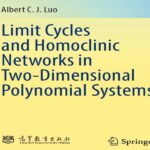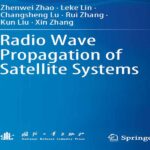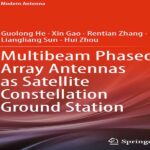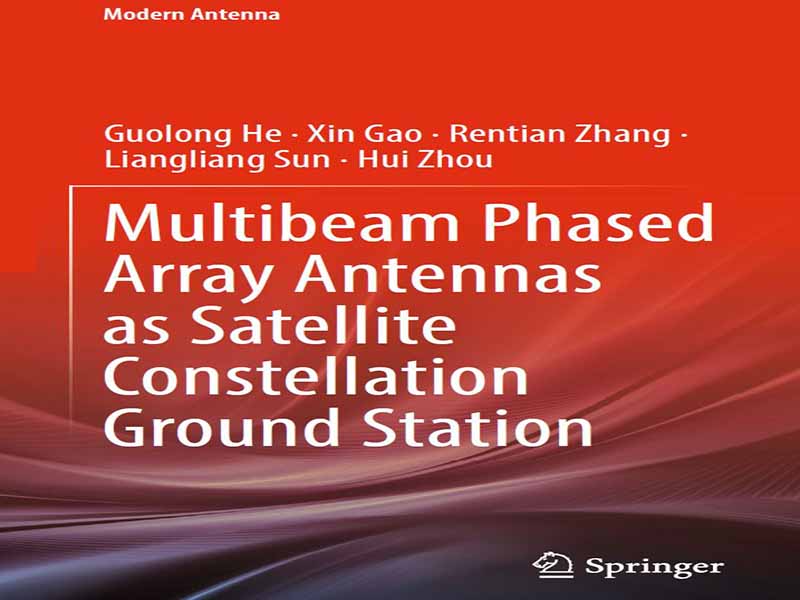- عنوان کتاب: Multibeam Phased Array Antennas as Satellite Constellation Ground Station
- نویسنده: Guolong He, Xin Gao, Rentian Zhang
- حوزه: آنتن ماهواره
- سال انتشار: 2024
- تعداد صفحه: 112
- زبان اصلی: انگلیسی
- نوع فایل: pdf
- حجم فایل: 4.0 مگابایت
باور کنید یا نه، اگرچه این اولین باری است که سعی میکنم یک کتاب دانشگاهی بنویسم و موضوع این کتاب در مورد آنتنهای آرایه فازی است، با این حال، حرفه حرفهای من با آنتنهای بازتابنده سهموی آغاز شد. وقتی در سال ۲۰۰۸ مدرک لیسانس خود را در رشته مهندسی الکترونیک گرفتم، خوشبختانه شغلی به من داده شد که شامل طراحی، ساخت و نگهداری ایستگاههای فضایی عمیق چین بود. در ده سال بعد، تیم ما سه ایستگاه زمینی توزیعشده در سطح جهان با آنتنهای بازتابنده بزرگ (۶۶ متر در ایستگاه جیاموسی و ۳۵ متر در ایستگاههای کاشی و آرژانتین) توسعه داده است که خدمات تلهمتری، ردیابی و فرمان (TT&C) مداوم، ارتباط قابل اعتماد و ناوبری دقیق را برای همه ماموریتهای فضایی عمیق چین، مانند ماموریتهای بلندپروازانه اکتشاف ماه Chang’E و اولین ماموریت اکتشاف مریخ چین Tianwen-1، ارائه میدهد. این ایستگاههای فضایی عمیق با ادغام با فناوریهای پیشرفته، از جمله موجبر پرتو کم تلفات، فرستنده متمرکز با توان بالا و تقویتکننده کم نویز برودتی، غولپیکر و قدرتمند هستند. من حتی مدیر پروژه شدم و مسئول تمام امور فنی آرایه آنتن فضای عمیق کاشی ۴×۳۵ متری بودم.
در کنار این پروژههای مربوط به ماموریتهای فضای عمیق، در برخی پروژههای دیگر برای ماموریتهای مدار زمین نیز شرکت کردم. جنبههای زیادی از تفاوتهای مورد نیاز ماموریت بین آنها وجود دارد. ماموریتهای فضای عمیق شامل دریافت سیگنالهای بسیار ضعیف از فواصل بین سیارهای وسیع است، از این رو تمرکز آن نیاز به ایستگاه زمینی با دقت بهتر و حساسیت بالاتر دارد. با این حال، با افزایش تعداد ماهوارهها در مدار پایین زمین (LEO)، یکی از فوریترین نیازها، قابلیت پشتیبانی از ماموریتهای چندگانه برای ایستگاه زمینی ماهواره LEO است. اخیراً، مفهوم صورت فلکی ماهواره LEO این مشکل را تسریع میکند.
آنتنهای بازتابنده سنتی قدرتمند هستند اما فقط میتوانند یک پرتو را یک بار در هر زمان تولید کنند. در مقابل، آنتنهای آرایه فازی قابلیت طبیعی تولید همزمان چندین پرتو را دارند، بنابراین الزامات مدیریت و کنترل عادی صورت فلکی ماهوارههای آینده را برآورده میکنند. در مقایسه با آنتنهای بازتابنده، معماری آنتنهای آرایه فازی با هزاران عنصر آنتن، ماژولهای یکپارچه ارسال/دریافت (T/R)، تقویتکنندههای توان غیرمتمرکز و شبکههای پرتودهی چابک کاملاً متفاوت است. علاوه بر این، آنتنهای آرایه فازی مزایای بسیار دیگری نسبت به آنتنهای بازتابنده دارند، مانند عملکرد بهتر، قابلیت اطمینان بالاتر و هزینه کمتر. همه این موارد، آن را به یک کاندیدای بسیار جذاب به عنوان ایستگاه زمینی نسل بعدی صورت فلکی ماهوارهای LEO تبدیل میکند.
در حال حاضر تعداد زیادی کتاب عالی در مورد آنتنهای آرایه فازی در ادبیات آزاد موجود است، خوانندگان تشویق میشوند که ابتدا اصول اولیه آنها را درک کنند (به عنوان مثال به [3-5] مراجعه کنید، من نیز از آنها چیزهای زیادی یاد میگیرم و بهره میبرم!). با این حال، آنتنهای آرایه فازی به عنوان ایستگاههای زمینی ماهوارهای هنوز جدید هستند. این کتاب عمدتاً بر برخی از شیوههای مهندسی متمرکز است و شکاف بین نظریه آرایه فازی شناخته شده و کاربرد ایستگاه زمینی ماهوارهای، مانند تحلیل تأثیر خطای تحریک آرایه و روشهای کالیبراسیون، طراحی هندسه آرایه برای پوشش نیمکره، مدیریت منابع پرتو چندگانه و غیره را پر میکند. امیدوارم بتوانید مطلب مفیدی پیدا کنید. در پایان، اگر نظر یا سوالی دارید، لطفاً دریغ نکنید و با من تماس بگیرید.
Whether you believe it or not, although this is my first time trying to write an academic book, and the topic of this book is about phased array antennas, however, my profes-sional career began with parabolic reflector antennas. When I earned my bachelor’s degree in electronic engineering in 2008, I was fortunately awarded a job that involved the design, construction, and maintenance of the Chinese deep space stations. In the following ten years, our team has developed three globally distributed ground stations with large reflector antennas (66 m in the Jiamusi station and 35 m in the Kashi and Argentina stations), providing continuous telemetry, tracking and command (TT&C), reliable communication, and precise navigation services for all Chinese deep space missions, such as the ambitious Lunar exploration missions Chang’E and the first Chinese Mars exploration mission Tianwen-1. These deep space stations are giant and powerful by integrating with state-of-the-art technologies, including low-loss beam waveguide, centralized high power transmitter, and cryogenic low noise amplifier. I even became the Project Manager and was responsible for all technical matters of the 4×35 m Kashi deep space antenna array.
Along with these projects for deep space missions, I also participated in some other projects for Earth orbit missions. There are many aspects of mission demand differences between them. The deep space missions involve receiving extremely weak signals from vast interplanetary distances, hence its focus requires the ground station with better accuracy and higher sensitivity. However, with the increasing number of satellites in the low earth orbit (LEO), one of the most urgent requirements is multiple mission support capability for the LEO satellite ground station. Recently, the concept of LEO satellite constellation accelerates this problem.
The traditional reflector antennas are powerful but can only produce one beam once at a time. On the contrary, phased array antennas have the natural capability to produce multiple beams simultaneously, thus meeting the requirements for ordinary management and control of future satellite constellation. Compared to the reflector antennas, the architecture of phased array antennas are quite different with thousands of antenna elements, integrated transmit/receive (T/R) modules, decentralized power amplifiers, and agile beamforming networks. Furthermore, phased array antennas have many other advantages over reflector antennas, such as better performance, higher reliability, and lower cost. All of these make it a very attractive candidate as next generation LEO satellite constellation ground station.
There are already a large number of excellent books about phased array antennas available in the open literature, the readers are encouraged to understand the basics of them first (see e.g. [3–5], I also learn and benefit a lot from them!). However, phased array antennas are still new as satellite ground stations. This book is mainly focused on some engineering practices and fills the gap between the well-known phased array theory and satellite ground station application, such as array excitation error impact analysis and calibration methods, array geometry design for hemispherical coverage, multiple beam resource management, etc. Hope you can find something useful. Finally, if you have any comments or questions, please do not hesitate to contact me.
این کتاب را میتوانید از لینک زیر بصورت رایگان دانلود کنید:
Download: Multibeam Phased Array Antennas as Satellite Constellation Ground Station




































نظرات کاربران